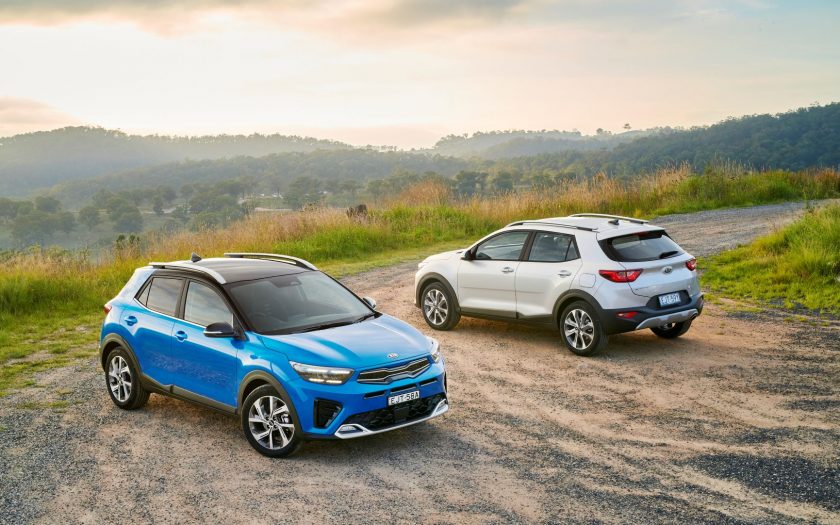THE ARRIVAL OF THE RECENTLY UPGRADED, stylish and practical Stonic, a sporty urban crossover with wide appeal provides Kia with an even wider spread of SUVs.
Developed off the core Rio platform, the first generation of the Stonic was released in Europe in 2017 and while at the time Kia Australia prioritised the Seltos for the local market, the upgraded Stonic has ticked the right boxes to join the local SUV range.
The Stonic will come to the Australian market with a pair of proven engines – a 1.4-litre in the S and Sport models and a 1.0-litre turbo exclusive to the GT-Line. Transmissions are a choice of 6-speed manual or automatic for the 1.4 and a 7-speed DCT for the turbo GT-Line.
“When Stonic was first mooted we had a close look at it and made the decision that Seltos made a more attractive proposition for the Australian market – a decision backed by the fact that at the time, there was limited Stonic supply available for Australia,” Kia Motors Australia Chief Operating Officer Damien Meredith said.
“With Seltos firmly established and very importantly, a significant increase in Stonic supply to accommodate our sales expectations, there is a much more compelling case for this sporty urban crossover with all the safety, value, style and practicality at the core of Kia’s DNA.”
“What Stonic offers are all the touch points people find so desirable in an SUV-style vehicle in a practical, urban-sized package which is both affordable and easy to live with.”
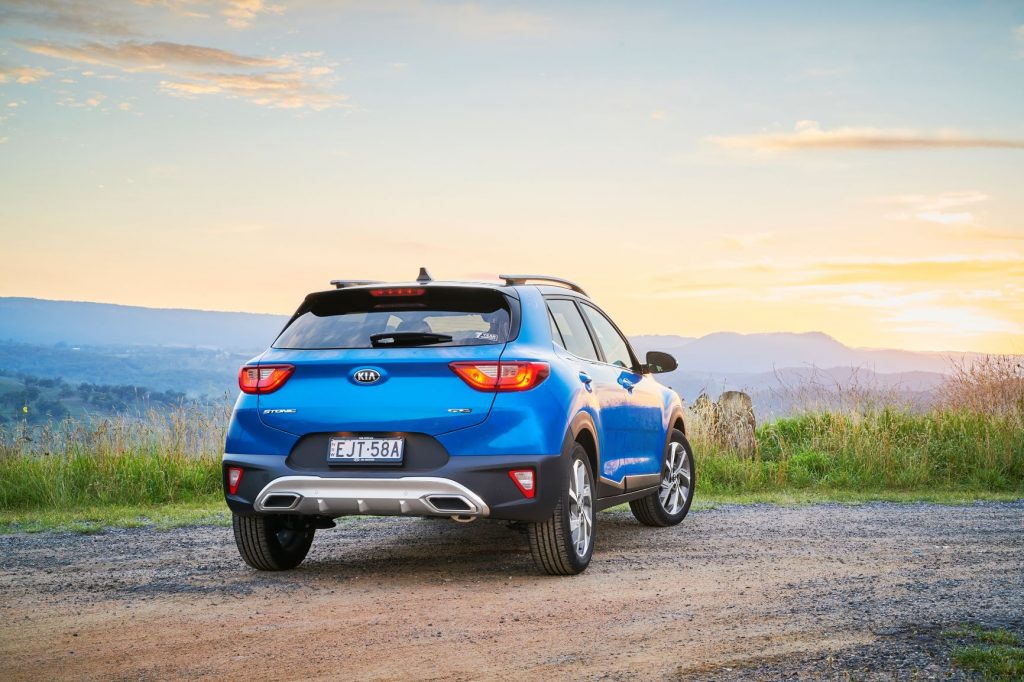
Like all new Kias, the Stonic benefits from extensive standard equipment across the three-model range – S, Sport and GT-Line – and Kia Australia’s extensive localised ride and handling tuning program.
Starting at $22,990 driveaway for the S manual ($1000 extra for 6-speed automatic) Stonic comes standard with six airbags, car/pedestrian/cyclist detection AEB, Lane Following Assist, reversing camera with dynamic parking guidelines, rear parking sensors, driver attention alert, cruise control, wireless Apple Carplay and Android Auto (S trim only), multi-connection Bluetooth, 8-inch Multimedia touchscreen, 6-speaker sound system, 4.2-inch TFT LCD driver’s cluster, 15-inch steel wheels and auto headlights.
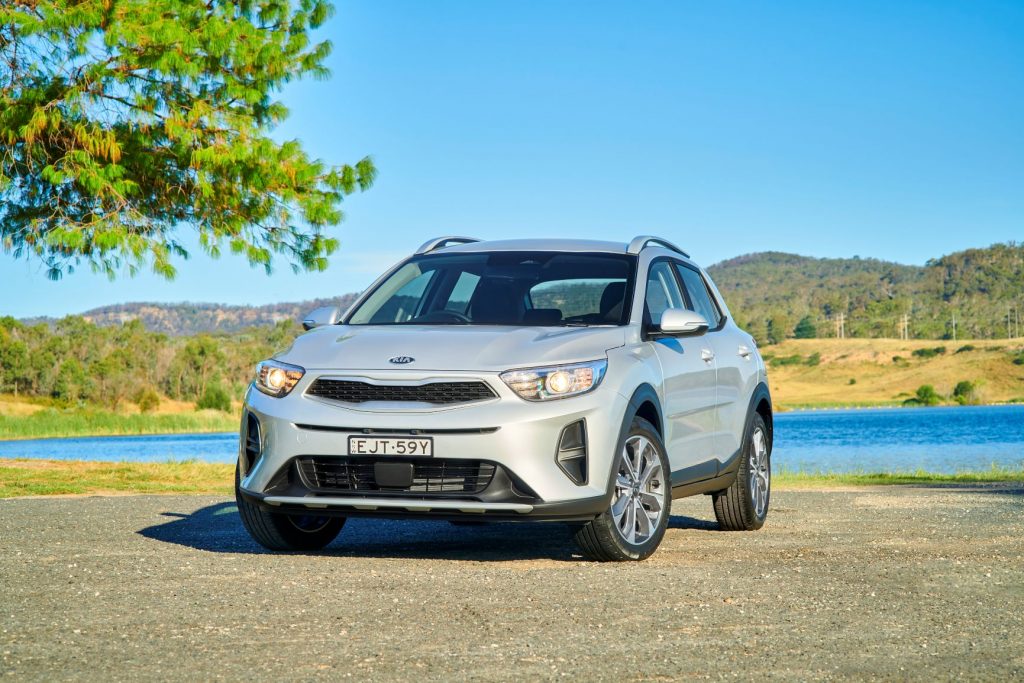
Stepping up to the Sport at $24,990 driveaway for the manual ($1000 extra for automatic) the specification adds 17-inch alloy wheels, smart key with push button start, 8-inch multimedia touchscreen with navigation, 10-year Mapcare updates with SUNA Traffic, electric folding mirrors and premium steering wheel and shifter.
For the top of the range GT-Line ($29,990 driveaway) the addition of the 1.0-litre turbo GDI engine, 7-speed dual clutch transmission and its unique and sportier suspension tune, sets the model apart as the hero member of the range. The GT-Line also gains a set of bespoke 17-inch alloys, idle-stop-and-go (also on manual S and Sport), an identifying body package, MFR LED headlights, two tone colour or sunroof, cloth and artificial leather seats, climate control air conditioning, privacy glass and electrochromic mirror.
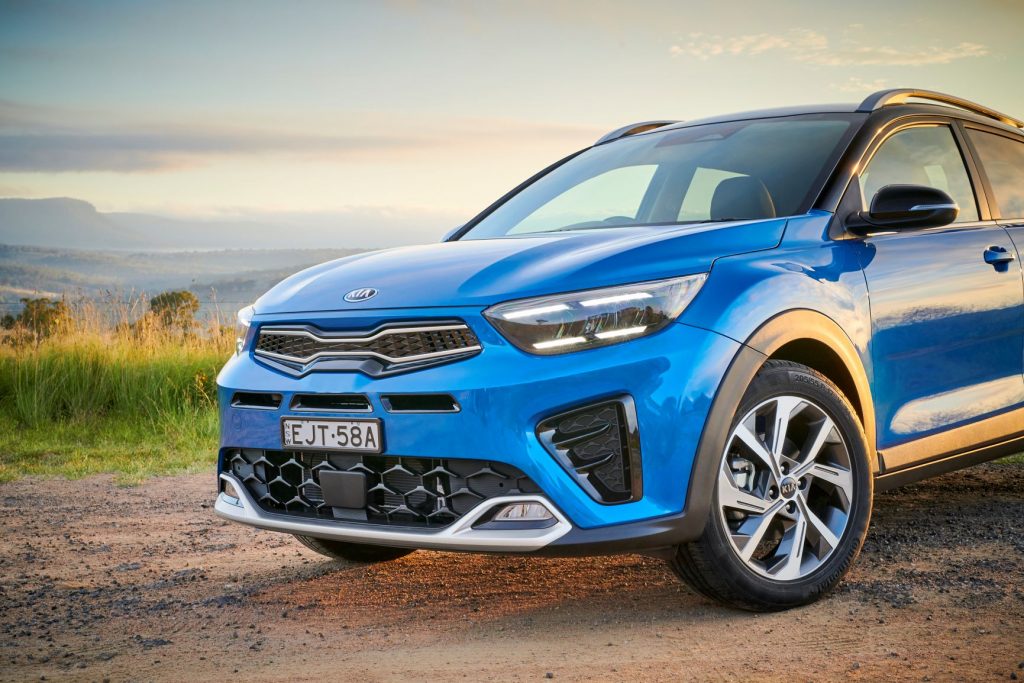
Stonic is available in seven colours for the 1.4-litre car: Clear White, Silky Silver, Perennial Grey, Aurora Black Pearl, Signal Red, Mighty Yellow and Sport Blue while the GT-Line has the option of four exclusive two-tone treatments: Clear white with Aurora Black Pearl roof, Mighty Yellow and Aurora Black Pearl roof, Sporty Blue with Aura Black Pearl Roof and Signal Red with Aurora Black Pearl Roof. Silky Silver is not available on GT-Line.
All colours except for Clear White are considered premium and attract an additional $520 cost.
Design
Sleek and Sporty
With a classic European style yet still highlighting the design cues so favoured by the popular SUV culture, the Stonic presents a strong street presence for a sensible urban crossover.
Within the overall styling there is a clear delineation between the 1.4 and the GT-Line with the hero car highlighting MFR LED headlights and LED fog lights reinforcing the dynamic front image while framing the chrome radiator grille.
While the overall impression of the Stonic is one of a solid stance and powerful dynamics, this is enhanced by some subtle SUV cues such as the aggressive fender treatment around the wheel arches, the thick C-pillar and a unique roof rack design.
From the rear the SUV theme continues with a prominent silver-painted rear diffuser and scuff plate and the stylish and practical rear spoiler featuring a high-mounted brake light.
The style theme continues in the interior with distinctive GT-Line features for the high-spec model, including unique seats, a flat-bottomed steering wheel, 8-inch multimedia screen and a carbon fibre-like treatment for the dashboard.
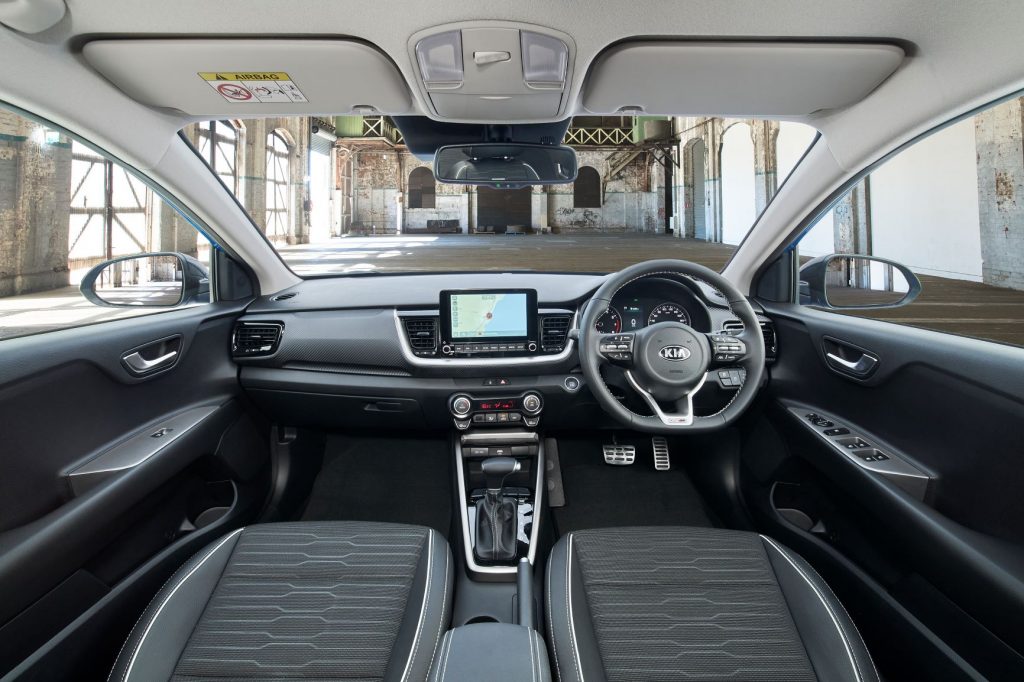
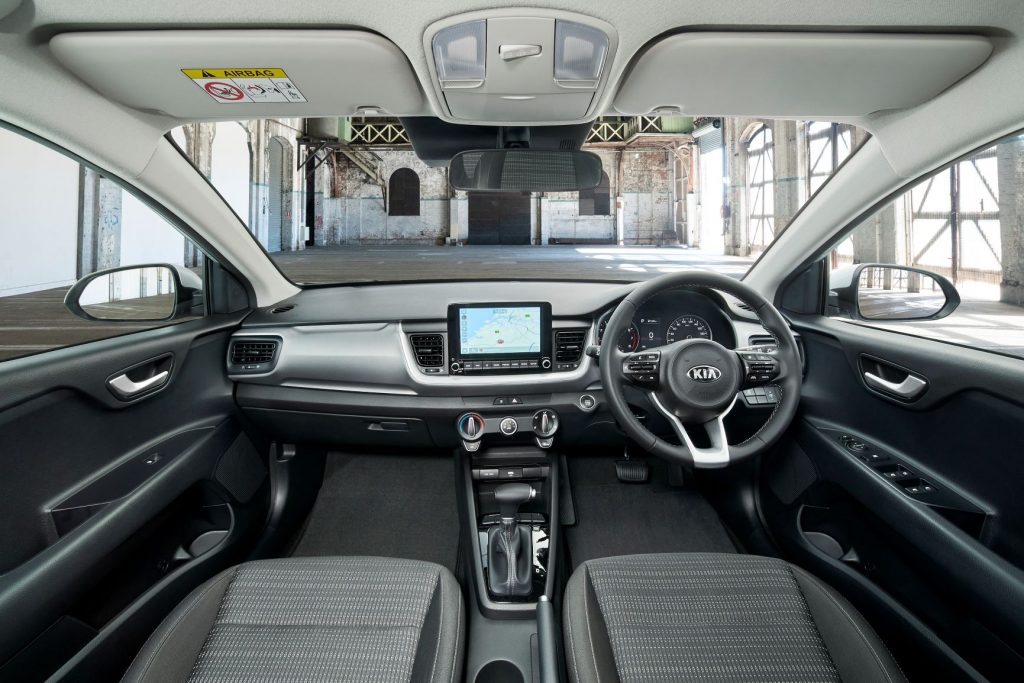
Drivability
Ride and handling
For Australia the Stonic will offer two proven Kappa engines, the 1.4-litre MPI making 74kW at 6000rpm and 133Nm at 4000rpm and the 1.0-litre turbo GDI in the GT-Line variant with 74kW at 4500-6000rpm and 172Nm at 1500-4000rpm.
Both engines will drive the front wheels, through a choice of 6-speed manual or automatic in the 1.4 models or 7-speed DCT in the GT-Line.
The 1.4 has a combined fuel economy of 6.0L/100km in manual trim (6.7 in automatic) with the turbo GDI using 5.4L/100km. CO2 emissions range from 155 g/km for the 6-speed automatic down to 125 g/km for the turbo.
In comparison to the Rio, Kia’s engineers and design team repositioned the Stonic’s gearbox forward by 28mm, increased the caster angle from 4.1 degrees to 4.6 degrees and specified high performance RS-valve shock absorbers.
At the rear, the use of a more vertical set-up for the shock absorbers – 8.4 degrees off vertical as opposed to Rio’s 25 degrees – and enhanced torsion beam construction has brought further improvement in ride quality and NVH.
To complete the engineering changes between Rio and Stonic, the number of teeth on the serrated column shaft on the column-mounted motor driven power steering has been increased from 36 to 66, resulting in more refined and precise steering input and feel.
Despite the severe restrictions imposed by the COVID-19 pandemic, Stonic has still benefitted from local ride and handling refinements. Combined with the, albeit restricted, local specifications for the shock absorbers the overall result is improved ride and handling feel.
For the 1.4 models the handling targets were neutral balance with good overall grip and stability. The steering targets were for precise on-centre feel and accuracy with mid-corner settlement at high speed. Overall, the 1.4 models boast passenger car-like dynamics with good balance between ride and handling.
The GT-Line, as the hero of the range, receives a firmer ride, sportier dynamics and a handling bias with good rough road absorption stability.
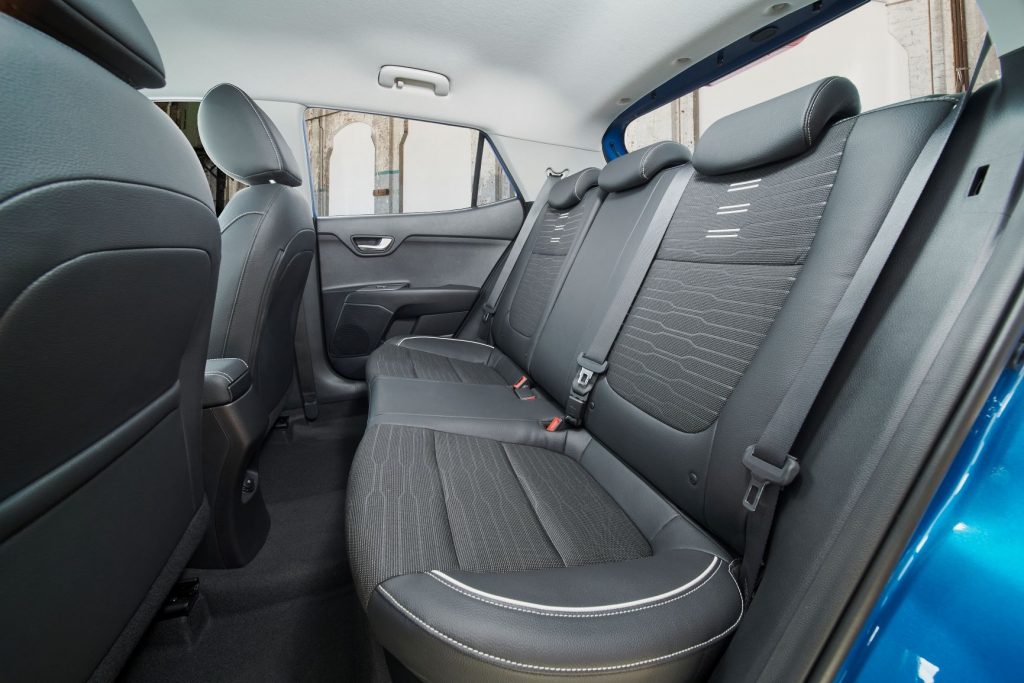
Safety
Advanced technology
Safety is a priority in the new Stonic with a host of active and passive systems offering protection for driver and passengers across all scenarios.
Autonomous Emergency Braking (AEB) is standard across the range with car, pedestrian and cyclist recognition with an activation spread ranging from 5km/h to 180km/h for vehicles and 5km/h to 85km/h for pedestrian and cyclists. The system works off a combination of camera and radar.
Further active safety features are Driver Attention Alert (DAA) which monitors driver behaviour and recognises signs of fatigue before recommending the driver take a break. It also includes Leading Vehicle Departure Alert; Lane Keeping Assist (LKA) which will alert the driver and activate steering control if the vehicle drifts out of its lane without the use of a turn indicator; Lane Following Assist (LFA) identifies the vehicle’s current lane and lane boundaries and will automatically centre the car if unintentional lane departure is detected; Parking Distance Warning (PDW) uses rear sensors to monitor and alert for objects around the vehicle when reversing; Rear Occupant Alert (ROA) is a class leading inclusion which monitors rear door opening and closing to assist the driver about rear seat passengers when exiting the vehicle.
The passive safety suite includes six depowered airbags (driver, passenger, two side and two curtain bags); Cornering Brake Control (CBC) assisting with control and balance when braking on curves by applying asymmetrical brake pressure to counteract traction loss; Vehicle Stability Management (VSM) working in conjunction with the Motor Driven Power Steering helps to maintain stability when simultaneously braking and cornering; Straight-Line Stability (SLS) when braking in a straight line SLS senses difference in applied brake pressure between right and left wheels and adjusts pressure to counteract yaw and maintain in-line stability.
(“Depowered airbags” are designed to reduce possible injuries sustained when airbags deploy, but still provide a similar level of protection.)
Structural safety is built around a high-strength body frame which has significant torsional and bending stiffness improvements when compared to Rio, gained through body frame structure and the use of structural adhesives. Two key areas of improvement are enhanced continuity between the front and side cowl panel and in optimising the quarter-frame structure with reinforced connection.
There is also significant benefit from an increased application of Advanced High Strength Steel (AHSS) throughout the chassis which has resulted in a 24 percent increase in tensile strength over the Rio. The key improvements are in enhanced durability against external impact, overall weight improvement in the chassis and better anti-collision performance through the inclusion of multiple structural paths for impact load embedded in the front chassis
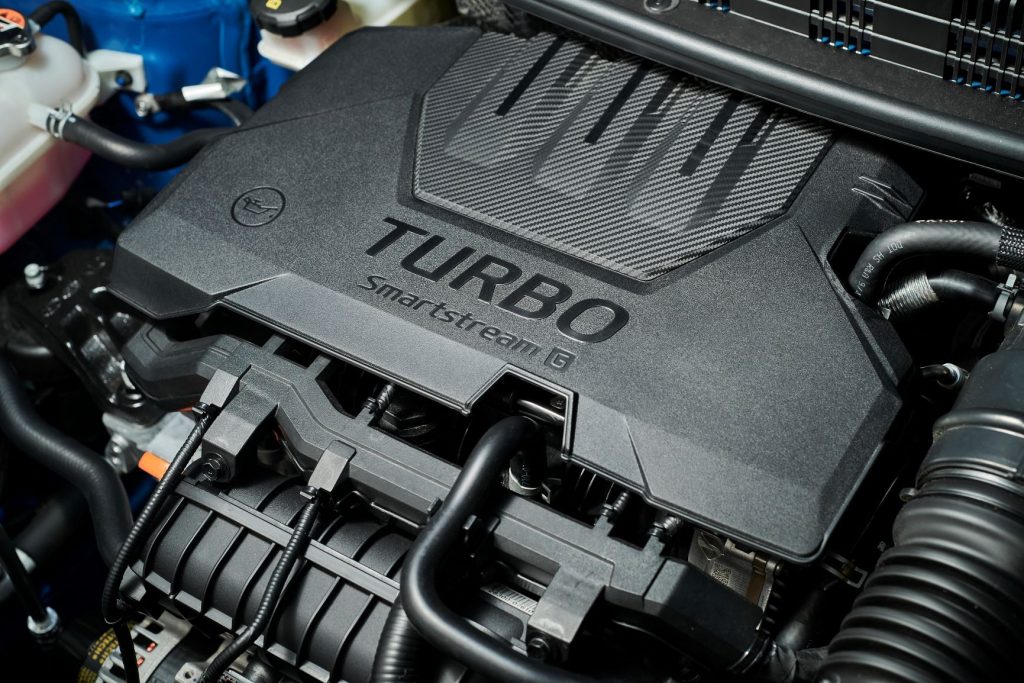
Comfort and Convenience
Enhancing interior practicality
The heart of driver convenience in new Stonic is the 8-inch audio-visual unit featuring wireless Apple Carplay and Android Auto connectivity on the S trim only. Wireless connectivity is not available on Sport and GT-Line trims where satellite navigation backed by 10-year Mapcare and SUNA traffic services support is included.
Bluetooth connectivity will also allow simultaneous pairing of up to two smartphones for individual music output through the Bluetooth streaming function.
For the GT-Line air conditioning has full automatic temperature control while the S and Sport trims have manual temperature and fan speed control allowing a wide range of settings. A bonus for the GT-Line is an auto defog system where a sensor detects fogging on the windscreen and automatically activates the air conditioning to clear it.
Across the range Stonic has the safety and convenience of a rear view camera with dynamic guidelines to assist in any reversing manoeuvres. Seatbelt reminders are standard across the range, as are steering wheel-mounted audio and cruise control switches allowing the driver full control without the risk of being distracted from the road.
All models have USB ports for the connection of memory sticks and other USB storage devices for both front and rear passengers.
A special surprise and delight feature to take the edge off that morning commute or long-distance transport is the Sounds of Nature function with nature-themed images and six types of soothing natural sounds.
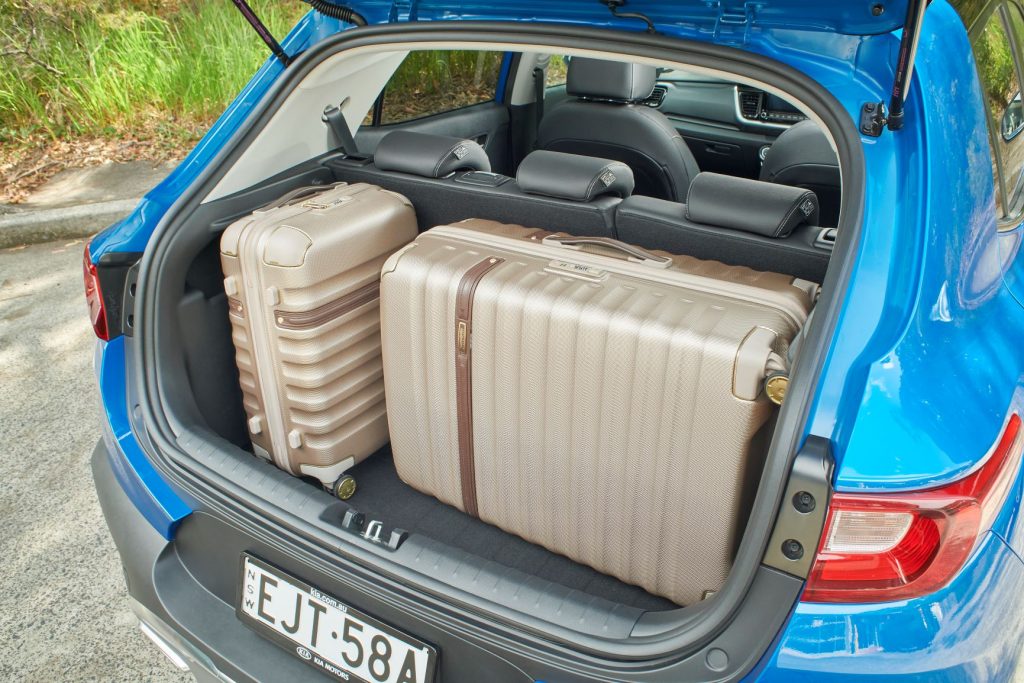
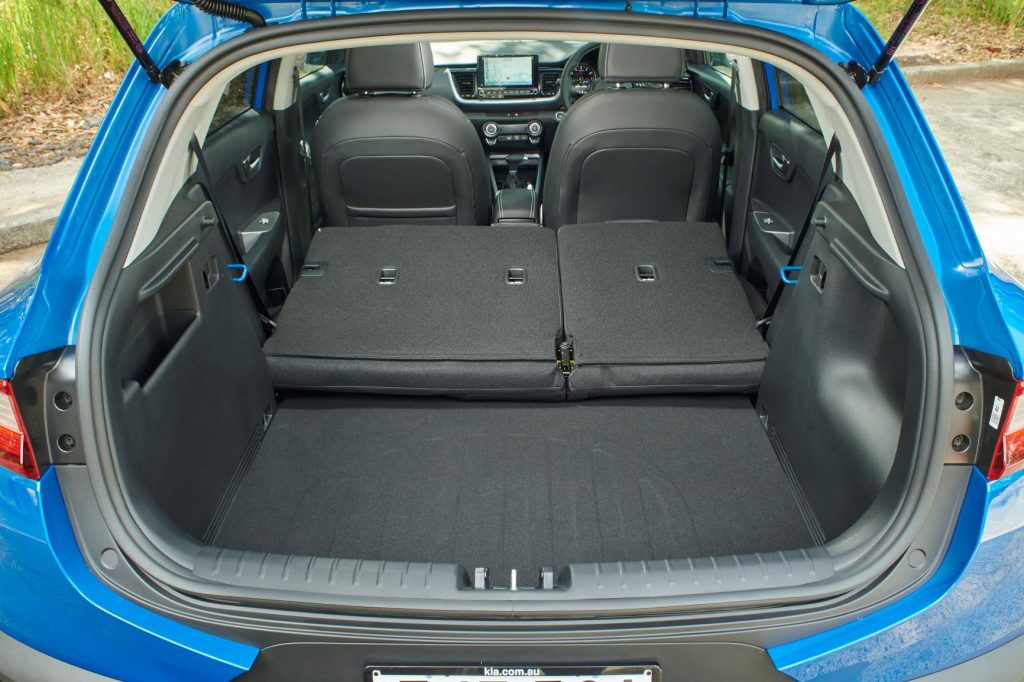
Packaging
Efficient and innovative
With overall length of 4140mm, width of 1760mm, height with roof racks 1520mm, wheelbase of 2580mm and minimum ground clearance of 165mm in S trim and 183mm for Sport and GT-Line, the Stonic sits comfortably against key competitors in the Mazda CX-3 (marginally longer, wider and higher than Stonic but with shorter wheelbase and less ground clearance) and Hyundai Venue (shorter in overall length and wheelbase with less ground clearance than Stonic but marginally wider and higher).
Stonic’s interior space is also well in the fight with competitive front and rear head room, leg room and shoulder room.
With a 60:40 split rear seat the versatility of the storage options is unparalleled. A voluminous 1155 litres (VDA) is available with the rear seats folded down.
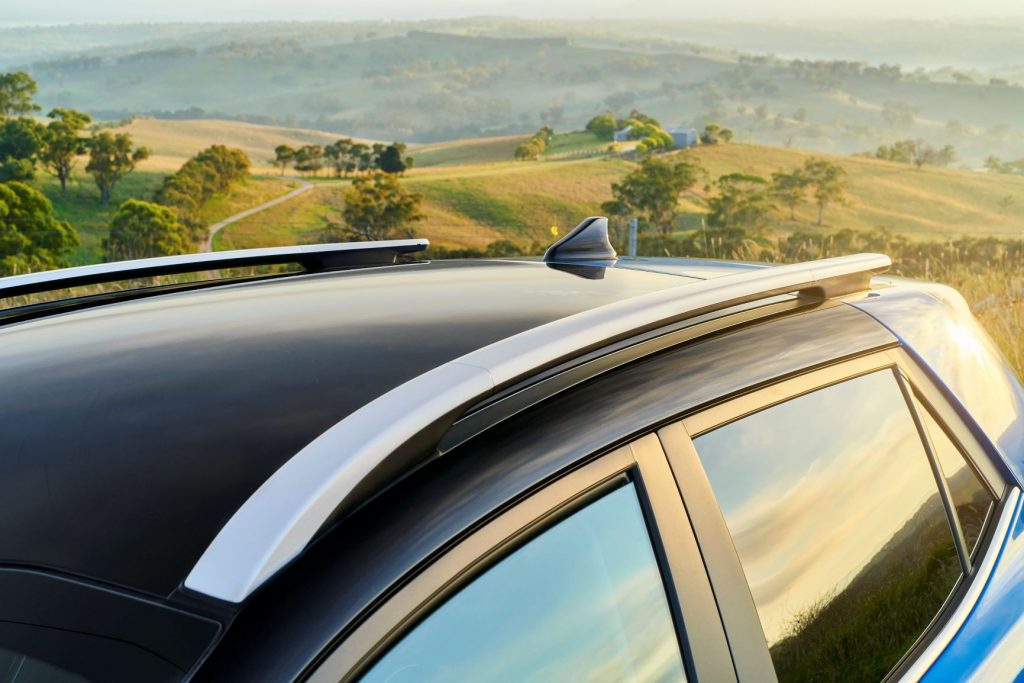
With the addition of a tow pack the Stonic is rated at 1000kg braked for the manual, 800kg braked for the 1.4 automatic and 900kg for the 1.0 T-GDI. Unbraked capacity is 450kg for all models with the downball rating at 75kg across the range.
A redesign of the door trim means it intrudes less into the cabin and offers minimised interference when entering and leaving the car, yet the bottle holder can still fit a 1.5-litre bottle.
The centre console cup holder layout has also been optimised to put drinks and stored small items easily to hand at any time while driving. A two-level centre console tray adds to the convenience with various size items – such as small change, keys or smartphone – able to be stored in separate trays.
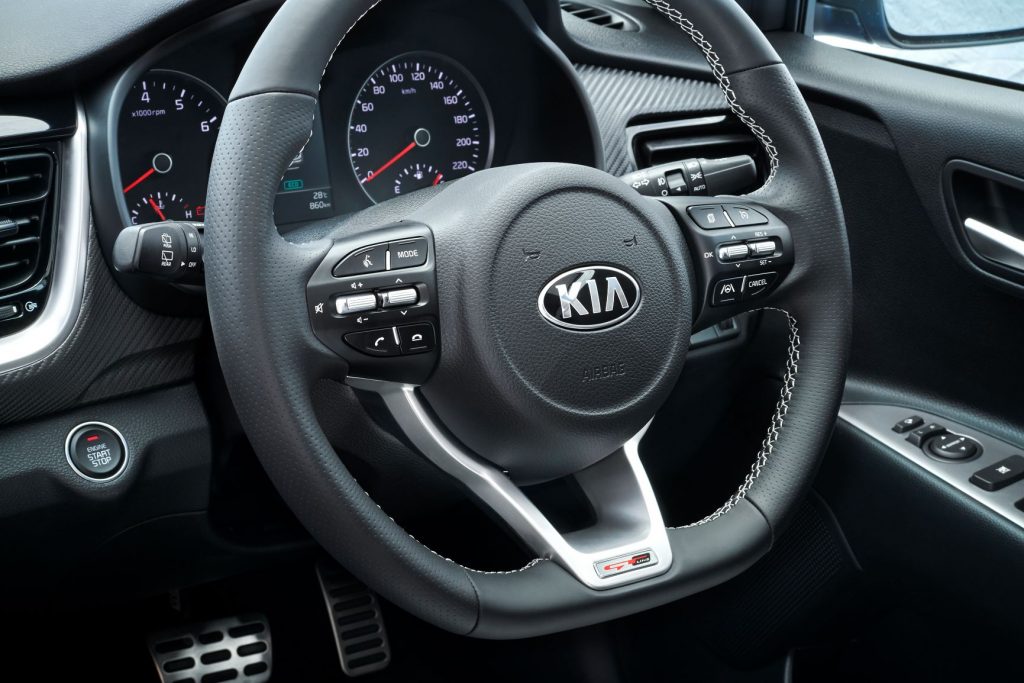
| Pricing | ||
| Stonic | RRP | Driveaway |
| S Manual | $21,490 | $22,990 |
| S Auto | $22,990 | $23,990 |
| Sport Manual | $24,490 | $24,990 |
| Sport Auto | $25,990 | $25,990 |
| GT-Line | $29,990 | $29,990 |
| Premium paint | $520 |
Once we have tested and assessed the new Kia Stonic, seniordriveraus will bring you a comprehensive review, including everything the over-50 driver needs to know.
